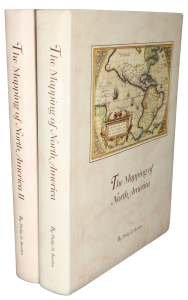Rare Maps and Prints
- World & Celestial
- North America
- West Indies, South & Central America
- British Isles
- British Isles
- English counties
- Large-scale
- Bedfordshire
- Berkshire
- Buckinghamshire
- Cambridgeshire
- Cheshire
- Cornwall
- Cumberland
- Derbyshire
- Devon
- Dorset
- Durham
- Essex
- Gloucestershire
- Hampshire
- Herefordshire
- Hertfordshire
- Huntingdonshire
- Islands
- Kent
- Lancashire
- Leicestershire
- Lincolnshire
- Middlesex
- Norfolk
- Northamptonshire
- Northumberland
- Nottinghamshire
- Oxfordshire
- Rutland
- Shropshire
- Somerset
- Staffordshire
- Suffolk
- Surrey
- Sussex
- Warwickshire
- Westmoreland
- Wiltshire
- Worcestershire
- Yorkshire
- Wales
- Scotland
- Ireland
- Western Europe
- Eastern Europe
- Middle East
- Africa
- Asia
- Australasia & Pacific
- Decorative Prints
- Title Pages
Mr. Philip D. Burden
P.O. Box 863,
Chalfont St. Giles, Bucks HP6 9HD,
UNITED KINGDOM
Tel: +44 (0) 1494 76 33 13
Email: enquiries@caburden.com
The map was the inspiration of Jacob Raphael de Cordova (1808-68) the most active land developer and speculator in Texas following its entry into the United States. De Cordova was Jamaican born and after a short spell in Philadelphia halted by the severe winters affecting his health he travelled south. During the War for Texan Independence he sourced goods in New Orleans settling in Galveston in 1837. He foresaw a land boom in the newly independent country and began speculating himself. But significantly he also began an aggressive marketing campaign to promote immigration. He was the most influential promoter of Texas since Stephen F. Austin. He would often travel to the east coast to give lectures on the State and its opportunities and once even went as far as Manchester in England to talk to the cotton spinners association. He did however put his money where his mouth was and at one point had control of what was probably the largest amount of land in private hands, nearly one million acres. It has even been stated that his business was so successful that he became ‘a quasi-official immigration department of the Texas Government and became the largest land agency that ever operated in the Southwest’. She also states that ‘De Cordova literally put Texas on a map’. He laid out the town of Waco in 1848-49. Unfortunately the Civil War took a heavy toll on him and he died in 1868 virtually penniless.
It was in 1830 that Stephen F. Austin published his most important map of Texas but in the intervening years a great deal of history and expansion had occurred. At the time it was a province of Mexico later fighting for its independence which was achieved in 1836. An independent nation for nine years it was by 1849 a State of the Union of the United States of America. He needed a map on a scale hitherto not published so he procured the help of Robert Creuzbaur, an employee of the newly formed General Land Office. This Texan body was unusual in that Texas was allowed to retain its public lands when it entered the Union so its records were by far the most accurate surveys available. It was responsible for some 250 million acres of land. Creuzbaur put an equal effort into those already settled lands in the east. The map extended from 93 to 103 degrees longitude and 25.5 to 34.5 degrees latitude north with an oval inset map lower right of Texas and the Southwest (235 x 295 mm.). With his help a whole new level of cartographic accuracy was published for the first time on a hitherto unprecedented scale. The de Cordova is shown on a level of detail far greater with the boundaries of the land districts, Native American villages, cities, towns, various colonies, forts, missions and even roads, ferries and post offices! It was engraved by John M. Atwood of New York. Born in Washington D.C. in 1818 he was an active engraver in New York from 1838-52.
Although dated and assigned the date 1849 the map was advertised in the ‘New York Tribune’ on 13 November 1848 as being ready in one weeks time for delivery to subscribers. On its publication Samuel Houston praised the map on the floor of the US Senate stating it was “the most correct and authentic map of Texas ever compiled”. Houston of course was President of the Republic of Texas, twice, Senator of the State and later Governor. Below the title cartouche de Cordova states that “without my signature all copies of this map have been fraudulently obtained”. Indeed the first state is signed in manuscript by the hands of Jacob de Cordova. There is some thought which believes that not all examples of the first state bear a manuscript signature, this example does. Further research needs to be undertaken on this. Martin stated that it ‘best summarizes the geographical information available about Texas immediately after the Mexican War … the map presents a remarkably accurate and detailed rendering of the area south and east of San Antonio.’ The map was constantly updated with the latest information appearing again in Houston 1850, 1851 and 1854. In 1854 De Cordova published a reduced sized version and in 1855 he sold the rights to this large map to J. H. Colton in New York who employed Pressler to update it. But it is the early Houston editions which are the most sought after and highly prized.
Provenance: Private Texas Collection from a Texan Corporation. References: Clements ‘Fifty Texas Rarities’ 36; Jenkins ‘Basic Texas Books’ 38 note; Graff 920; Martin & Martin ‘Maps of Texas’ p. 141; Martin & Martin ‘Contours of Discovery’ p. 57; Ornish ‘Pioneer Jewish Texans’ pp. 58 & 61; Phillips p. 844; Ristow ‘American Maps’ p. 459; Taliaferro 295; Wheat ‘Mapping the Transmississippi West’ 603.
De Cordova's Map of the State of Texas Compiled from the Records of the General Land Office of the State, by Robert Creuzbaur
SOLD








